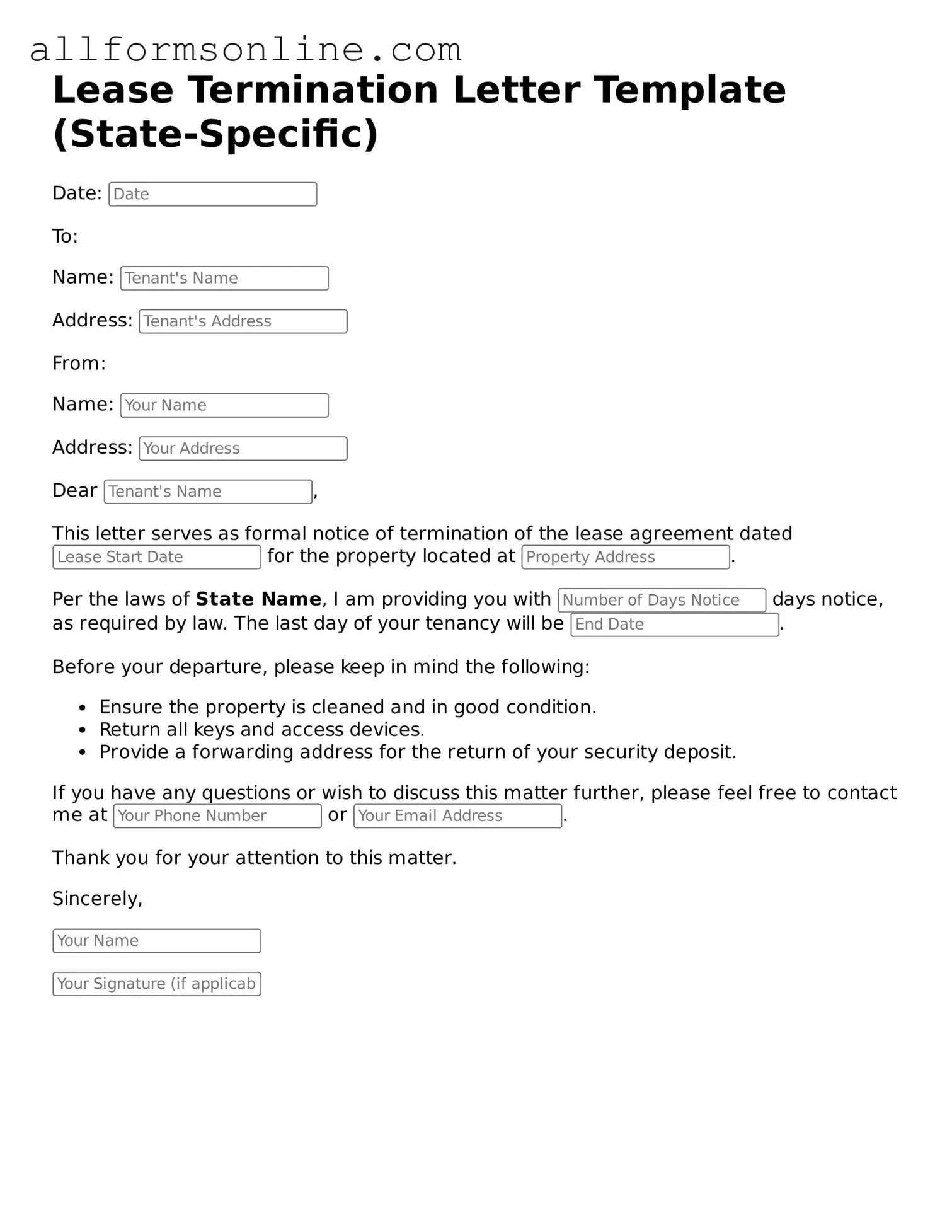What is a Lease Termination Letter?
A Lease Termination Letter is a formal document that notifies your landlord or tenant of your intent to end a lease agreement. This letter outlines the necessary details, such as the termination date and any relevant reasons for the termination. It serves as a record of communication between both parties and helps ensure that the process is clear and legally compliant.
When should I send a Lease Termination Letter?
You should send a Lease Termination Letter well in advance of your intended move-out date. Most leases require notice to be given 30 to 60 days prior to termination. Check your lease agreement for specific requirements. Sending the letter early gives both parties time to prepare for the transition and avoids potential disputes.
What information should be included in the letter?
Your Lease Termination Letter should include your name, the address of the rental property, the date of the letter, and the intended move-out date. Additionally, mention the reason for termination, if applicable, and any requests for the return of your security deposit. Be sure to sign the letter to confirm its authenticity.
Do I need to provide a reason for terminating the lease?
Can I hand-deliver the Lease Termination Letter?
Yes, you can hand-deliver the Lease Termination Letter. This method ensures that the recipient receives it directly. If you choose this option, consider asking for a signed acknowledgment of receipt. Alternatively, you can send the letter via certified mail to have a record of delivery.
What happens after I send the Lease Termination Letter?
After sending the Lease Termination Letter, expect to receive a response from your landlord or tenant. They may acknowledge receipt and confirm the termination date. Be prepared for any follow-up discussions regarding the return of your security deposit or move-out procedures. Maintain open communication to ensure a smooth transition.
